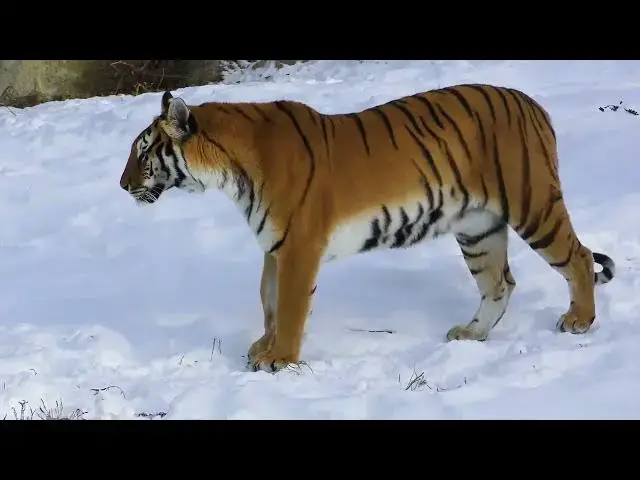Explore how tigers, Asia's top predators, adjust to dwindling prey populations. Learn about their expanded hunting ranges, diet changes, and altered behaviors. This video examines the challenges tigers face and the importance of conservation efforts to protect these magnificent creatures and their ecosystems.
Show More Show Less View Video Transcript
0:00
how Tigers adapt to prey scarcity
0:03
survival strategies
0:05
revealed Tigers The Majestic apex
0:09
predators of Asia face a growing
0:11
challenge in the
0:12
wild as their natural prey becomes
0:15
scarce how do these big cats adapt to
0:19
survive this is the crucial question we
0:22
will explore
0:23
today tigers are known for their
0:26
strength and hunting prowess typically
0:29
praying on large undulates like deer and
0:31
wild
0:32
Born however human activities such as
0:36
poaching and habitat destruction have
0:38
led to significant declines in these
0:40
prey
0:42
populations in response tigers have
0:44
developed several adaptive strategies to
0:47
cope with this
0:48
loss one of the primary ways Tigers
0:51
adapt is by expanding their hunting
0:54
range as prey becomes scarce in their
0:58
usual territory Tigers will travel
1:01
greater distances in search of
1:03
food this expansion can lead to Tigers
1:06
entering new habitats including areas
1:10
closer to human settlements which can
1:13
result in increased human tiger
1:16
conflct another important adaptation is
1:19
dietary
1:21
diversification while Tigers prefer
1:23
large prey they have shown remarkable
1:26
flexibility in their diet when
1:28
necessary they may start hunting smaller
1:31
animals like monkeys porcupines or even
1:34
fish this ability to switch to
1:37
Alternative food sources helped Tigers
1:39
survive in areas where their preferred
1:42
prey has become
1:44
scarce Tigers also adapt by changing
1:47
their hunting
1:48
patterns traditionally tigers are
1:51
nocturnal Hunters but in areas with
1:54
depleted prey populations they may
1:56
become more active during daylight hours
2:00
this shift allows them to take advantage
2:03
of different hunting opportunities and
2:05
increases their chances of finding
2:07
food interestingly loss of prey can also
2:11
affect Tiger's reproductive
2:14
behaviors female Tigers May delay having
2:17
Cubs or have smaller litters when food
2:19
is
2:20
scarce this adaptation helps ensure that
2:25
they can provide enough nourishment for
2:27
their offspring increasing the chances
2:30
of survival for both the mother and her
2:33
Cubs while these adaptations demonstrate
2:36
the resilience of tigers they also come
2:39
with
2:41
consequences expanded hunting ranges and
2:44
dietary changes can lead to increased
2:47
competition with other predators and
2:49
potential conflicts with
2:52
humans additionally altered reproductive
2:55
patterns can slow population growth
2:58
making it harder for Tiger populations
3:00
to
3:01
recover the adaptability of tigers in
3:03
the face of prey loss is remarkable but
3:06
it is not a long-term
3:08
solution conservation efforts are
3:10
crucial to protect both Tigers and their
3:14
prey
3:15
species by preserving habitats
3:18
preventing poaching and promoting
3:20
sustainable coexistence between humans
3:23
and wild life we can help ensure that
3:26
these magnificent creatures continue to
3:29
thrive in their natural
3:32
environments understanding how Tigers
3:35
adapt to loss of prey populations not
3:37
only provides valuable insights into
3:39
their behavior but also highlights the
3:42
urgent need for comprehensive
3:44
conservation
3:45
strategies as we continue to study and
3:48
protect these incredible animals we gain
3:51
a deeper appreciation for their
3:53
resilience and the delicate balance of
3:55
ecosystems they inhabit
#Pets & Animals
#Wildlife
#Biological Sciences
#Ecology & Environment

